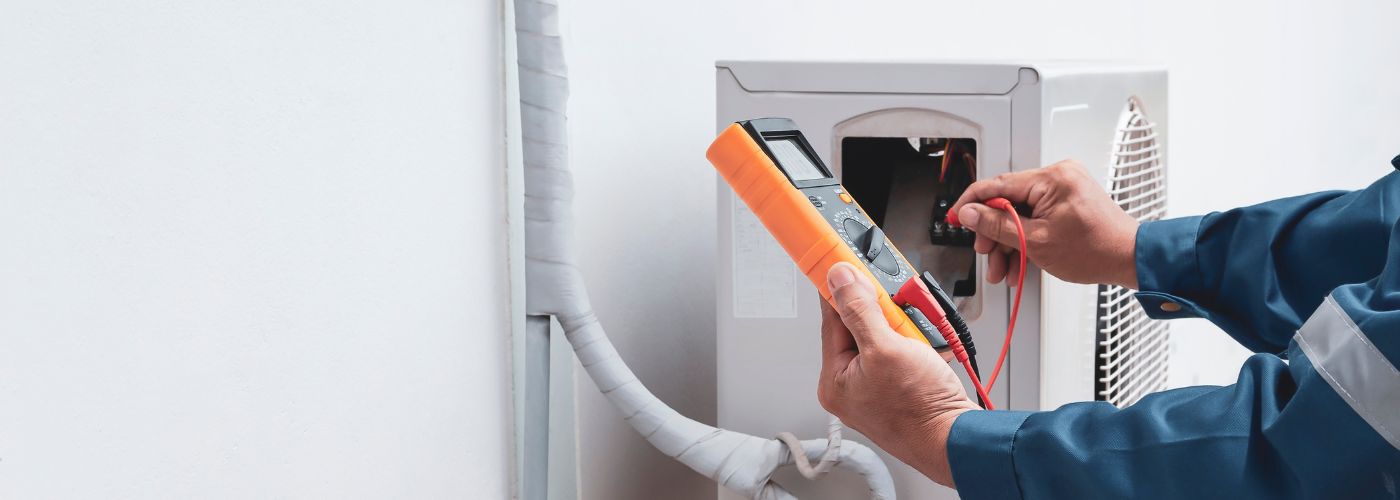If you think all refrigerants are the same, think again! Different types of AC refrigerants can affect not only your comfort but also your wallet and the planet. In this guide, we’ll explore the various AC refrigerant types, their pros and cons, and what they mean for homeowners. By understanding these differences, you’ll be better equipped to choose the right options for your air conditioning system.
What is an AC Refrigerant and Why Does It Matter
HVAC refrigerants are the lifeblood of your air conditioning system, playing a crucial role in how effectively your unit cools or heats your space. These substances absorb heat from the indoor air and release it outside, making them essential for temperature control.
The effectiveness of your AC hinges on the type of refrigerant used; common types include R-410A, R-22, and newer options like R-32. Each has its own environmental impact, energy efficiency, and performance characteristics that can affect both your comfort and utility bills.
Understanding AC refrigerant types is vital not just for maintaining your system but also for making eco-conscious choices. For instance, while R-22 was once a popular choice, it’s being phased out due to its ozone-depleting properties.
Opting for alternatives like R-32 can reduce your carbon footprint and improve energy efficiency. As technology evolves, newer refrigerants promise even better performance with less environmental impact, making it essential for homeowners to stay informed about their options.
Comparing R-22 & R-32 Refrigerants
When comparing R-22 and R-32 refrigerants, one significant aspect is their environmental impact. R-22, a hydrochlorofluorocarbon (HCFC), has been phased out in many countries due to its ozone-depleting potential.

In contrast, R-32 is a hydrofluorocarbon (HFC) with a much lower global warming potential, making it a more eco-friendly choice among AC refrigerant types. As more manufacturers shift toward R-32, the HVAC industry is seeing a positive trend in sustainability.
Another key difference lies in efficiency and performance. R-32 operates at higher pressures than R-22, which allows for better energy efficiency and cooling capacity. This means that systems using R-32 can often achieve the same cooling output with less refrigerant, potentially lowering operating costs over time.
However, the higher pressure also requires special handling and equipment, which can be a hurdle for those accustomed to the older R-22 systems.
Transitioning to R-454B Refrigerant in HVAC Systems
The HVAC industry is undergoing a major transition as R-410A is being phased out in favor of R-454B, a next-generation refrigerant with a significantly lower global warming potential.
With new environmental regulations pushing for more sustainable solutions, R-454B has emerged as the leading replacement thanks to its improved efficiency, reduced carbon footprint, and compatibility with existing HVAC system designs.
While it still requires proper safety handling due to its A2L (mildly flammable) classification, R-454B offers a smoother transition for manufacturers and service technicians compared to other alternatives.
As the 2025 deadline for the refrigerant switch approaches, R-454B marks a crucial step toward greener HVAC systems that don’t compromise performance.
Safe Handling and Disposal of AC Refrigerants
When it comes to AC refrigerant types, understanding safe handling and disposal is crucial for both environmental protection and personal safety. Many common refrigerants, like R-22 and R-454B, can be harmful if not managed properly.

Always wear protective gear, such as gloves and goggles, when working with these substances. A small leak can lead to significant environmental damage, so using recovery machines to capture refrigerants before service or disposal is essential.
Disposing of AC refrigerants requires adherence to local regulations and guidelines. Many regions mandate that only certified professionals handle refrigerant recovery and disposal. By ensuring proper recycling methods, you not only comply with laws but also contribute to a greener planet.
Remember, even a tiny amount of refrigerant can have a big impact on climate change, so every effort counts.
Signs You May Need a Refrigerant Recharge
One of the first signs you may need a refrigerant recharge is a noticeable change in your AC’s cooling ability. If your system is blowing warm air instead of the refreshing chill you expect, it’s a clear signal that something is off.
This could be due to low refrigerant levels, which can happen over time or due to leaks. Different AC refrigerant types have specific properties, and if yours is low, it can’t effectively absorb heat, leaving your space uncomfortably warm with poor air quality.
Another indicator is ice forming on your AC unit. If you notice frost developing on the evaporator coils, it suggests that insufficient refrigerant is causing the coils to become too cold. This ice buildup not only hampers performance but can also lead to further damage if left unchecked.
Lastly, if your energy bills have skyrocketed without a change in usage, it may be due to your unit working harder to compensate for low refrigerant levels. Keeping an eye on these signs can help you maintain optimal AC performance and comfort in your home.
Frequently Asked Questions (FAQ)
The type of refrigerant in your AC affects cooling performance, energy efficiency, and environmental impact. Newer refrigerants like R-32 and R-454B offer better efficiency and lower global warming potential, while older options like R-22 are being phased out due to their harmful effects on the ozone layer.
Common signs include your AC blowing warm air, ice forming on the evaporator coils, or an unexplained increase in energy bills. These symptoms often indicate low refrigerant levels or a potential leak, and a professional technician should inspect the system to confirm the issue.
Yes. R-454B has a significantly lower global warming potential compared to R-410A and is becoming the preferred replacement due to new environmental regulations. It provides strong performance, improved efficiency, and a smoother transition for many modern HVAC systems.
